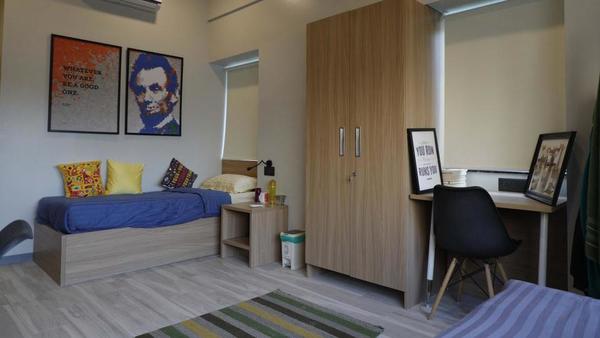
MUMBAI: The cost of education has been skyrocketing across the country. Both health-care and education tend to see double digit inflation every year. To add to the education cost, in the next couple of years you will witness a steep rise in the cost of student accommodation as well.
According to real estate consultant JLL, there are nearly 37 million students pursuing higher education in India, of this an estimated 11 million migrant students seek accommodation.
Only one-third of these students are accommodated in campus hostels provided by the institutions while the remaining 7 million have opted for, and consequently, fuelled the growth of informal housing models. Considering the demography of the country, the demand for student housing is set to rise. In order to fulfil the demand, developer and investors are looking at organised student-housing segment. Let’s take a look at the organised student accommodation category and how it will impact your money.
ORGANISED STUDENT HOUSING
Developers and investors are taking cue from the demand for student housing in higher education. “Most of the organised student housing companies are aggregators of residential housing around the campus. There are only a few who have the vision to focus on purpose-led accommodation which is prevalent in countries such as the US, the UK and Australia,” said Vijay Rajagopalan, head-alternatives, JLL India. Purpose-built student accommodation (PBSA), housing specifically built for students by real estate companies and student living are a newer concept in India. An alternative for hostels and paying guest accommodation, PBSA and student living have better amenities in place. “Operators are driving students to organised living where the product is standardised and better than the existing model,” said Rajagopalan. Companies such as Stanza Living, Oxfordcaps, Zolostays, Yourspace and Placio offer organised student living.
COST OF BETTER AMENITIES
Real estate consultants believe that the parents will pay more for better amenities. “You can’t start at a price point beyond the unorganised market. However, once the parents see quality, hygiene and safety, they will be willing to pay more. In a paper titled Future of India Real Estate-deciphering the mid-term perspective report, conducted by JLL and FICCI, it was noted that majority of student housing is operated in the mid-premium category with an average cost of ₹1.5 lakh per annum. Compared with a hostel, the price of PBSA will be higher. For instance, the hostel in Delhi North Campus will cost around₹50,000 per annum whereas a double occupancy will cost over₹1.5 lakh per annum. “You can’t compare hostel fees as it is hugely subsidised by the government,” said Anindya Dutta, co-founder, Stanza Living.
INVESTORS TO BENEFIT
According to experts, the yield on the organised student housing assets is significantly higher. “The yield in say North Campus, Delhi, property would typically be 2.5-3%. In case of student housing concept, the yield would go up to 6.5-7%,” said Dutta.
“You are creating a pool of assets for high-net worth individuals and it becomes good diversification from the yield perspective. Also for most aggregators it is asset light. Unlike other commercial real assets, your asset is not in the top eight cities. Markets such as Jaipur Indore and tier 2 cities are also large consumers of student housing,” said Prateek Pant, head of products and solutions, Sanctum Wealth Management.
WHAT DOES IT MEAN FOR YOU?
If you are planning to send your child for higher education to another city, you may spend more on the accommodating besides the cost of education. The supply of hostels and paying guests is likely to be lower than the demand. Hence, you might need to look for alternatives. It would be prudent to keep a tab on the changing market and plan your finances to meet your child’s higher education need.
[“source=livemint”]





